
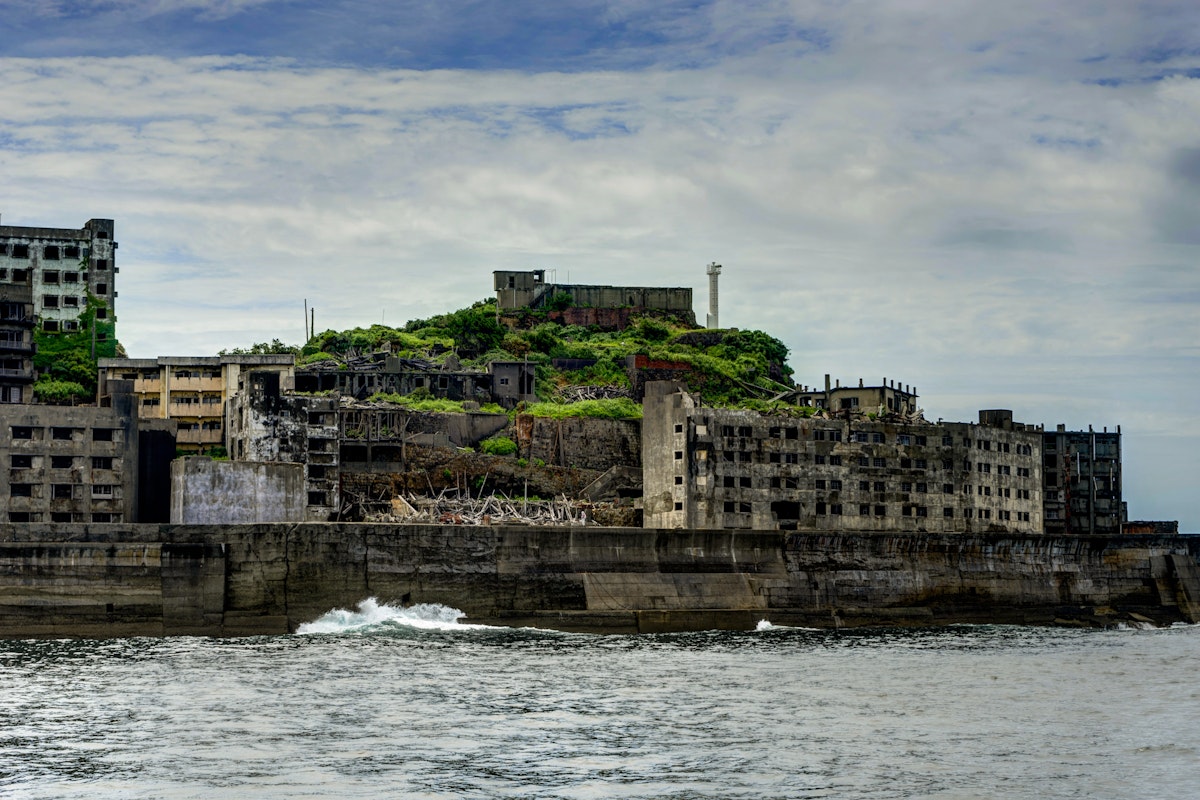
군함도, 즉 전투함 섬에 대한 가이드에 오신 것을 환영합니다. 일본 나가사키와 가까운 이 섬은 한때 석탄 광산에서 일하던 사람들로 가득했지만 지금은 완전히 비어 있으며 오직 오래된 건물만 남아 있습니다.
역사를 좋아하거나 흥미진진한 모험을 원하신다면 이 매력적이고도 비어 있는 섬에 대한 더 많은 정보를 계속 읽어보세요.
군함도 섬은, 즉 하시마는 나가사키 시 중심에서 약 19킬로미터 떨어져 있으며, 처음에는 석탄 채굴 시설로 개발되었습니다. 이 섬은 1887년에 설립되어 일본의 메이지 산업혁명에서 중요한 역할을 하였으며, significant coal supplier로 활동하며 일본의 현대화에 기여했습니다.
전성기에는 섬에 많은 인구가 밀집해 있었고, 특히 제2차 세계대전 중에는 석탄에 대한 수요가 가장 높았습니다. 그러나 석탄 매장량이 고갈되면서 1974년에 채굴 작업이 중단되었습니다. 그 후 섬은 산업 중심지에서 버려진 섬으로 빠르게 변모하여 주민들이 떠나고 유령 섬으로 남겨졌습니다. 버려진 건물과 정지된 기계들로 가득 찬 곳입니다.
오늘날 군함도는 잊혀진 시대의 유령 같은 증거로써 관광객과 역사 애호가들을 끌어모으고 있습니다.
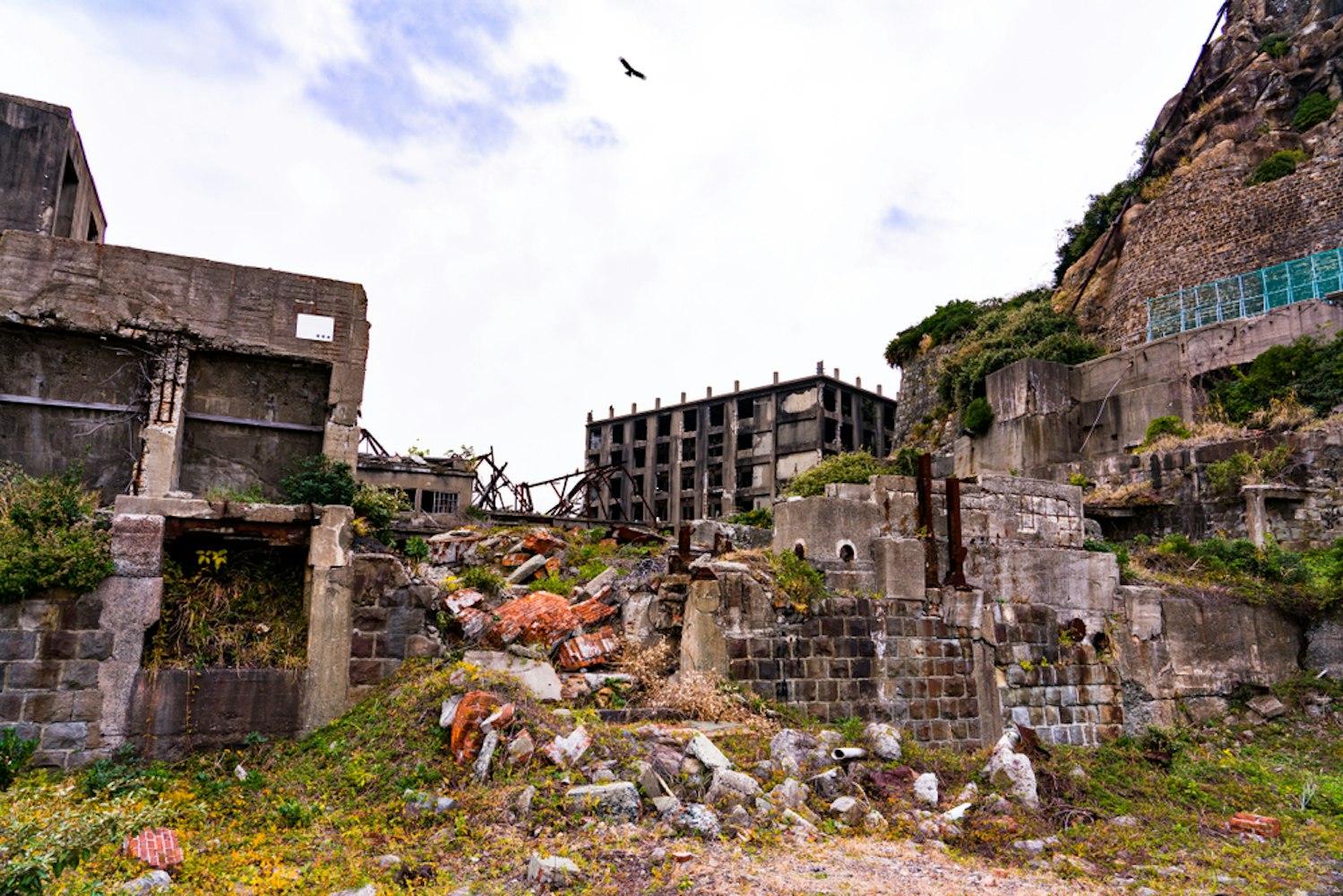
하시마 섬은 일반적으로 "군함도" 또는 "전투함 섬"이라고 불리는 이유는 독특한 형태가 전투함과 매우 유사하기 때문입니다. 섬은 바다의 벽, 산업시설, 고층 아파트 건물이 합쳐져 멀리서 볼 때 군사 선박처럼 보이기 때문에 이 별명을 얻었습니다.
많은 사람들이 이 모양을 제2차 세계대전의 파괴적인 기계와 연관짓지만, 그 유사성은 순전히 우연이었으며 수년 동안 섬의 매력 중 일부였습니다. 섬이 국제적인 주목을 받으면서, 특히 유네스코 세계문화유산으로 등재된 후 "전투함 섬"이라는 별명이 더 인기 있게 되고 널리 인정받게 되었습니다.
이 이름은 관광명소로서의 지위를 높이는 데 도움이 되었으며, 한국과 같은 다른 나라 사람들의 주목도 이러한 별명 덕분에 이루어졌습니다. 현재 무인도임에도 불구하고 이 매력적인 이름은 섬의 독특한 물리적 특성을 강조할 뿐만 아니라, 전 세계 방문객들을 끌어들이는 흥미 요소도 더해주었습니다.
군함도를 방문할 계획이라면 가장 가까운 관문은나가사키 공항입니다. 비행기에서 내리면 버스나 택시를 타고 나가사키 시로 가십시오. 거기서 관광 회사들이 섬으로 가는 왕복 패키지를 제공합니다.
평판이 좋은 투어 회사를 선택하는 것이 반드시 필요합니다. 나가사키 항구에는 여러 회사가 다양한 장소에서 출발하는 관광 보트를 운영하고 있으며, 나가사키 역에서 트램 1호선을 타고 3분 거리에 있는 오하토 트램 정류장 근처의 나가사키 포트 페리 터미널과, 나가사키 역에서 트램 1호선과 5호선을 타고 15분 거리에 있는 아우라카이칸도리 트램 정류장 근처의 토키와 터미널이 포함됩니다.
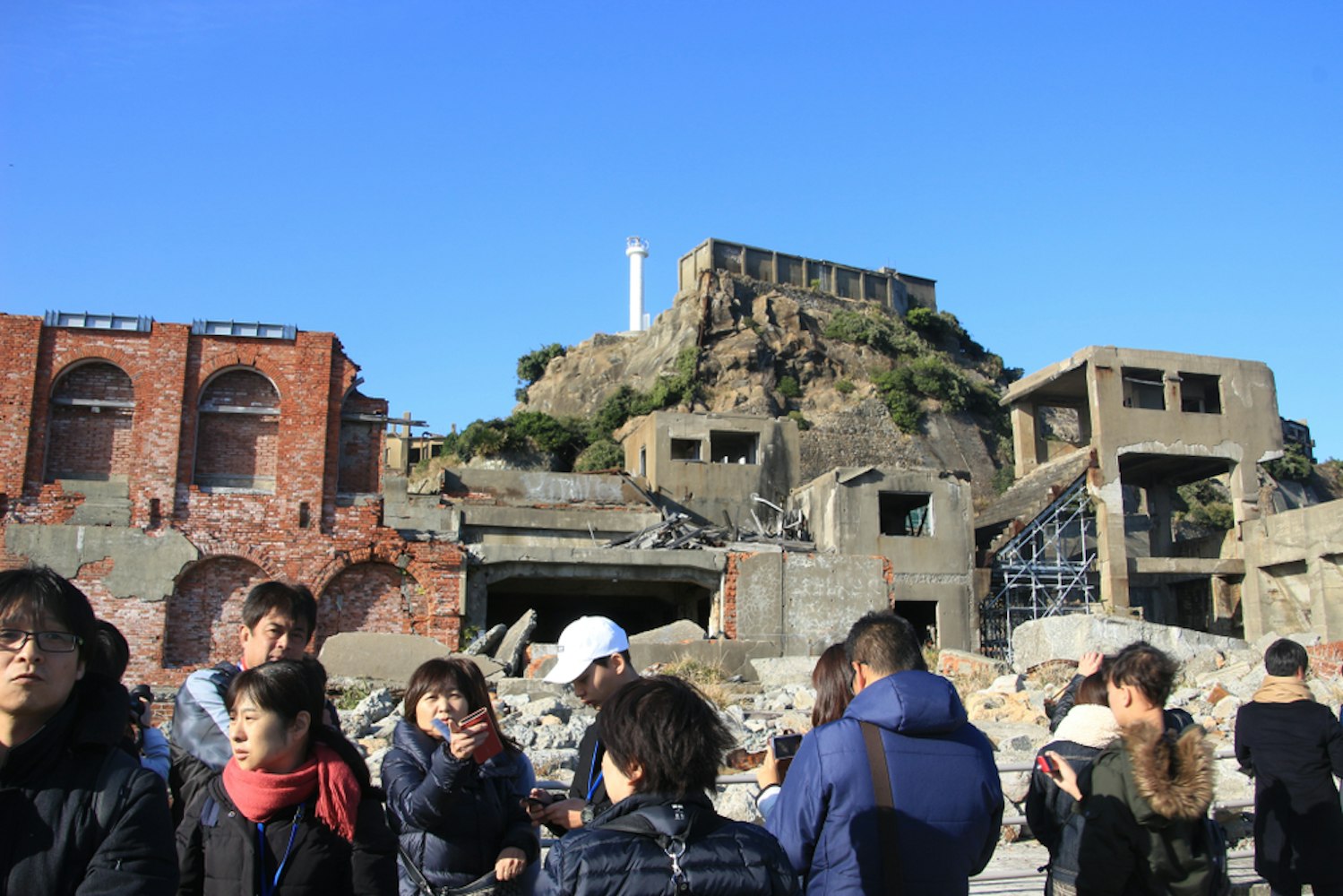
전투함 섬으로의 모험을 위해 짐을 싸기 전에 알아야 할 필수적인 팁이 있습니다. "전투함 섬으로의 출항 전 반드시 알아야 할 8가지 팁" 가이드를 통해 안전하고 풍부한 경험을 보장하세요.
하시마 섬은 개인적으로 방문할 수 없습니다.
나가사키의 날씨는 매우 험악할 수 있습니다.
군함도는 심약자에게는 적합하지 않습니다.
신체 조건에 따라 입장이 거부될 수 있습니다.
아기와 애완동물은 허용되지 않습니다.
안전 계약서에 서명해야 합니다.
하시마 섬 투어는 최대 60분 동안 진행됩니다.
스카이폴은 거기에서 촬영되지 않았습니다.
안전 및 보존 우려로 인해 일본 정부는 하시마 섬으로의 개인 여행을 엄격히 금지합니다. 반드시 승인된 투어 회사를 통해 예약해야 하며, 이 회사가 필요한 안전 지침과 역사적 통찰을 제공하는 가이드 투어를 제공합니다.
나가사키의 해안 날씨는 매우 예측 불가능할 수 있으며, 맑은 하늘에서 갑작스러운 폭풍우까지 다양할 수 있습니다. 따라서 하시마 섬으로의 투어가 단기적으로 취소되거나 재조정되는 것은 드문 일이 아니므로 여행 계획에 유연성을 필수적으로 요구하는 상황에 대비하세요.
부서진 건물, 버려진 거리 및 섬뜩한 침묵이 하시마 섬(군함도)의 공포스러운 분위기를 자아내어 일부 방문객들에게는 압도적일 수 있습니다. 그러므로 한때 지구에서 가장 인구 밀집 지역이었던 이 지역을 거닐 때, 잠재적으로 불안한 경험에 대한 정서적 준비를 하는 것이 좋습니다.
투어 운영자는 고객의 안전을 보장할 책임이 있으므로 투어에 앞서 기본 건강 평가를 받아야 할 수 있습니다. 그 결과에 따라 투어 입장이 거부될 수 있으며, 이는 당신과 그룹의 안전을 위한 예방 조치입니다.
섬의 부서진 인프라의 불안정한 성격과 잠재적 위험으로 인해 아기와 애완동물이 투어에 참여하는 것은 엄격히 금지됩니다. 이 규칙은 모든 방문객의 안전을 보장하고 투어 회사와 관계 당국에서 정한 규정을 준수하기 위해 시행됩니다.
하시마 섬으로 가는 배에 탑승하기 전에 모든 방문객은 안전 계약서에 서명해야 합니다. 이 문서에는 관련된 위험과 준수해야 할 안전 프로토콜이 안내되어 있으며, 투어 중 각자의 책임을 이해하고 준수하도록 합니다.
하시마 섬으로 가는 투어는 안전 우려와 물류 제약으로 인해 짧게 설정되었습니다. 일반적으로 최대 1시간 동안 지속되며, 방문객들에게 잠재적인 위험에 대한 과도한 노출 없이 섬의 유령 같은 아름다움과 역사적 중요성을 제공합니다.
대중적인 믿음에도 불구하고, 이 섬은 제임스 본드 영화 "스카이폴"의 촬영 장소가 아니었습니다. 하시마 섬은 영화의 배경에 영감을 주었지만, 장면들은 섬에서 촬영된 것이 아니라 CGI와 세트로 만들어졌습니다.
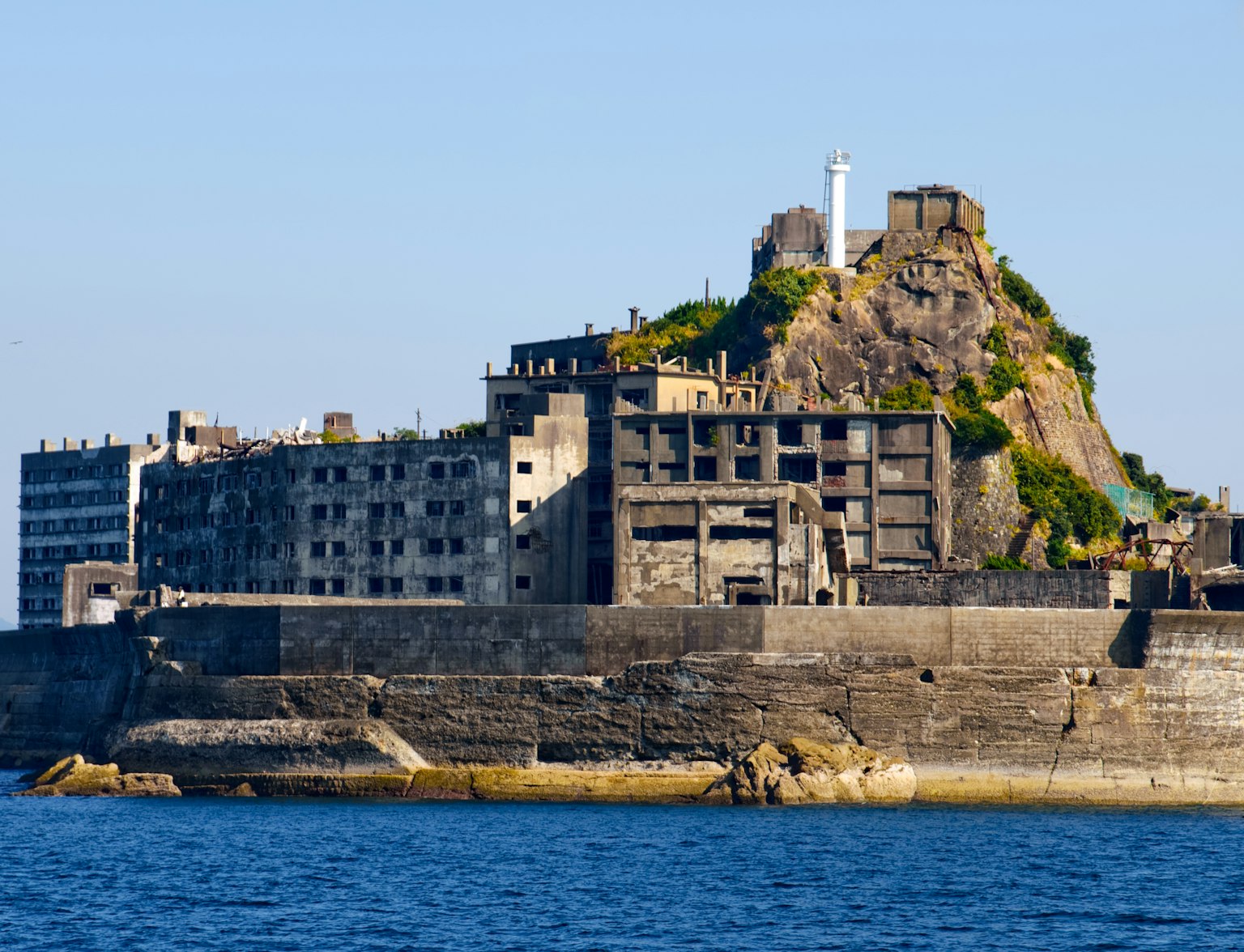
잊지 못할 군함도 여행을 떠나세요.
하시마 섬(군함도)에 발을 내디디면 아파트 건물과 시청을 포함한 버려진 건물들이 즉시 눈에 띕니다. 이러한 부서진 구조물들은 한때 광부들과 안타깝게도 전시 중 중국 포로들로 가득했던 지구에서 가장 인구가 밀집된 장소의 일부였습니다.
섬의 건축 유적들은 일본의 급속한 산업화에 대해 이해하는 데 중요한 의미를 가지며, 현재는 완전히 버려진 이곳들은 일본 역사에서 중요한 시대에 대한 유령 같지만 중요한 통찰을 제공합니다.대중 문화 속의 하시마 섬하시마 섬, 더 잘 알려진 군함도는 역사적 흥미와 대중 문화의 상징적인 지점이 되었습니다. 섬의 매력적인 분위기는 영화와 다큐멘터리의 매력적인 배경이 되었으며, 유네스코 세계문화유산으로서의 지위에 의해 더욱 유명해졌습니다.
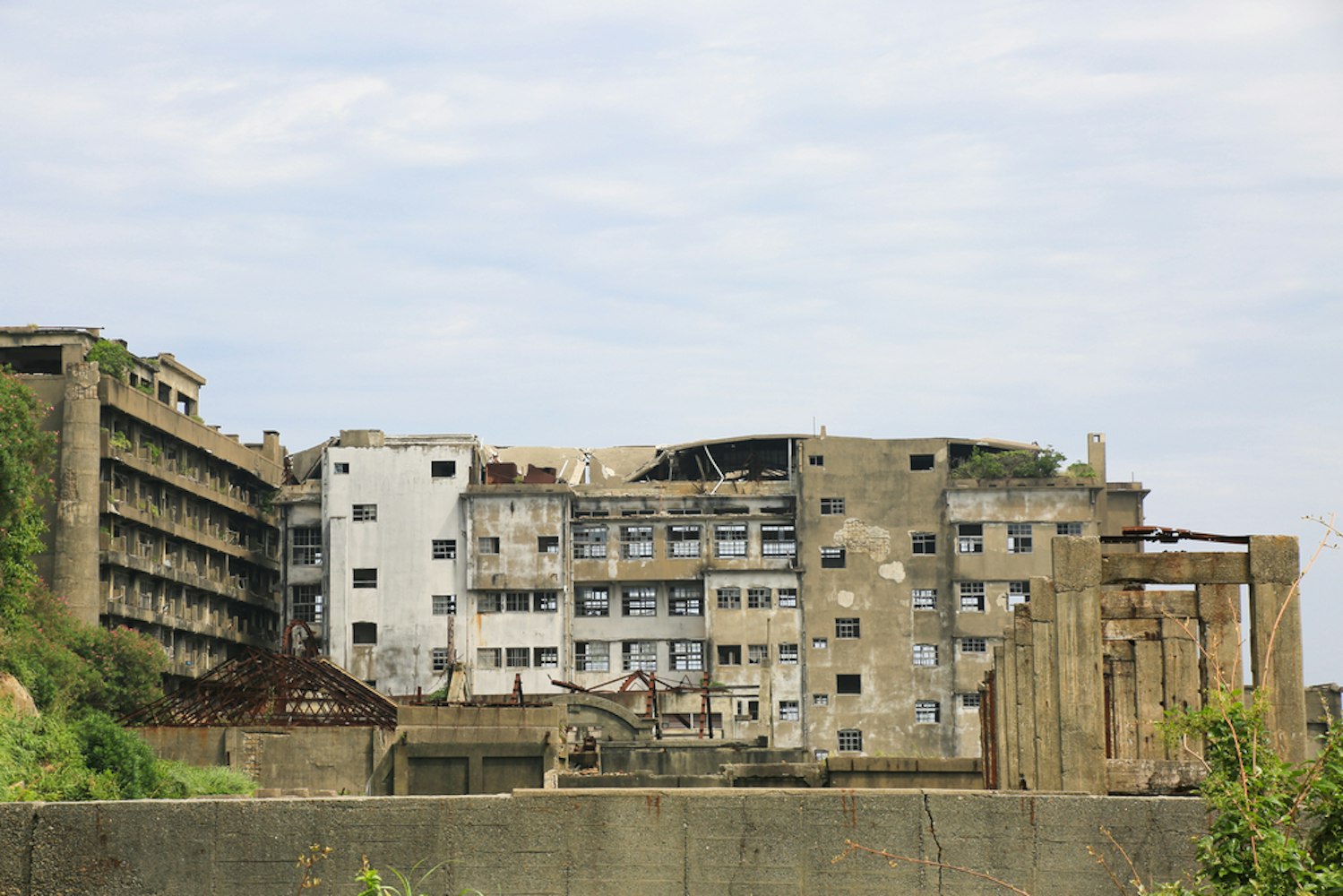
전반적으로 이 섬은 전 세계적인 주목을 받아 새로운 차원의 관심을 끌었으며, 역사와 현대의 신비함을 탐험하려는 폭넓은 관객을 끌어모으고 있습니다.
군함도는 안전하게 방문할 수 있나요?군함도 섬 방문은 일반적으로 안전하며, 자격을 갖춘 투어 운영자들이 필요한 안전 조치를 제공합니다. 이들은 보통 헬멧과 같은 안전 장비를 제공하고, 투어 그룹을 통해 안전한 구역으로 안내합니다.한때 붐비던 석탄 광산이 있었던 이 섬은 고르지 않은 지형과 부서진 구조물로 이루어져 있어 견고한 신발이 필수적입니다. 이 섬은 휠체어 접근이 불가능하며, 강제 노동이 이루어졌던 장소였던 점은 그 역사의 우울한 색조를 더합니다.
투어는 악천후 조건에 따라 영향을 받을 수 있으므로 방문 전에 일기 예보를 확인하는 것이 좋습니다. 안전 지침을 준수하는 것은 이 역사적으로 복잡한 장소를 안전하게 탐험하는 데 도움이 됩니다.
군함도는 오싹하면서도 경외감을 불러일으키는 분위기를 가지고 있으며, 일본의 산업 과거에 대한 깊은 통찰을 제공합니다. 유네스코 세계문화유산으로서, 이는 일본의
메이지 산업
혁명과 연결된 역사적 증거입니다.역사 애호가이든 모험을 추구하는 사람이든 이 버려진 섬은 어디에서도 찾을 수 없는 독특한 경험을 제공합니다. 그러므로 다음에 나가사키 시에 인근에 방문하게 된다면, 나가사키 평화 공원 방문 후 군함도를 여행 일정에 추가해 보세요.이곳은 시간 속으로의 잊지 못할 여행이며 인류의 야망과 어리석음을 증명하는 장소입니다. revolution.
Whether you're a history buff or an adventure seeker, this abandoned island offers a unique experience you won't find anywhere else. So, next time you're near Nagasaki city, consider adding Gunkanjima to your itinerary after a somber visit to the Nagasaki Peace Park.
It is an unforgettable journey back in time and a testament to humankind's ambitions and follies.
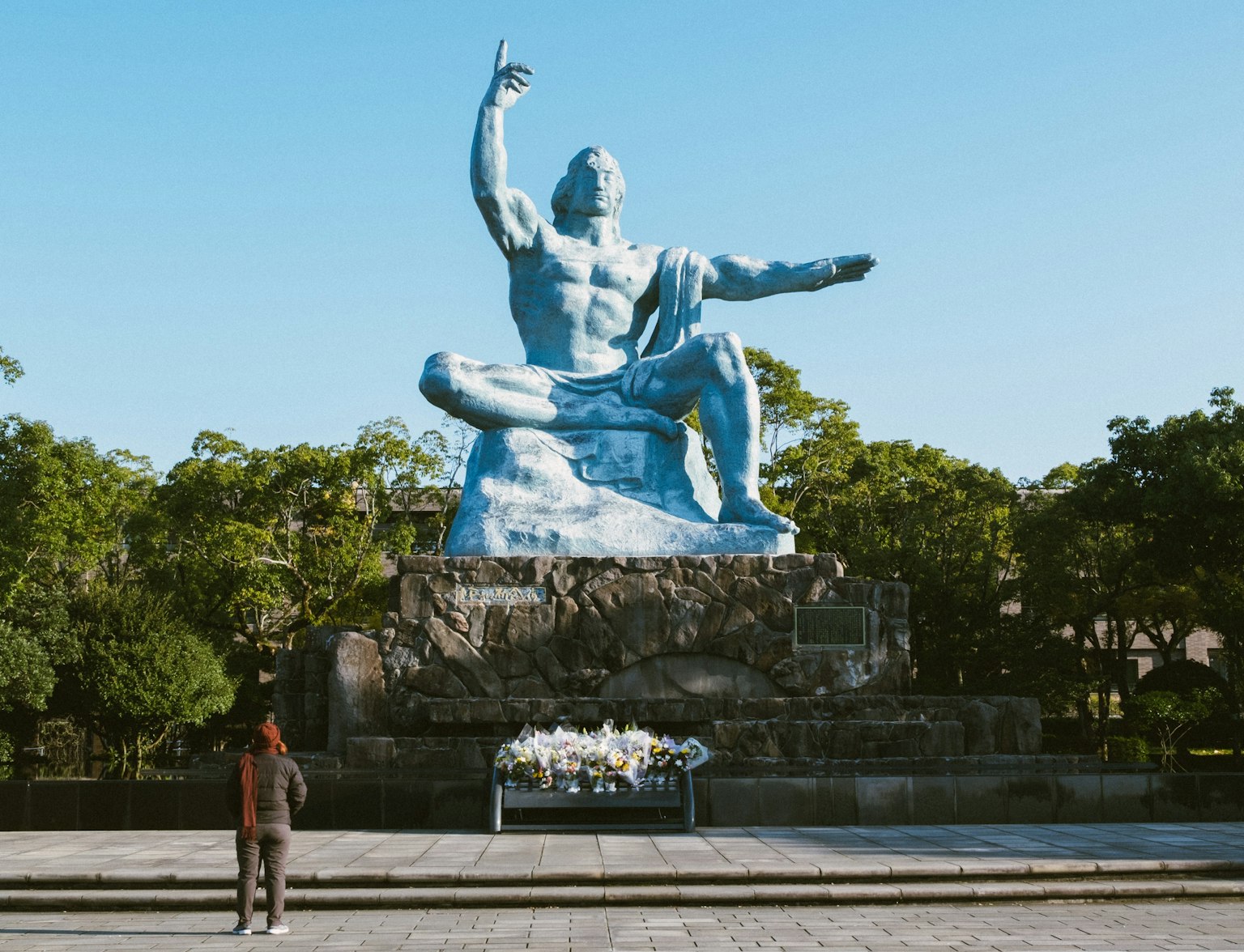
나가사키의 놀라운 역사와 회복력을 잊지 못할 자가 안내 오디오 투어를 통해 발견하세요.



